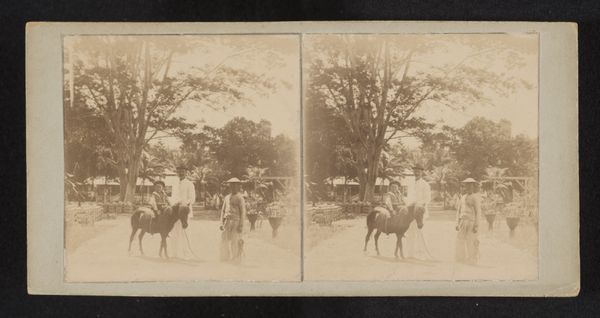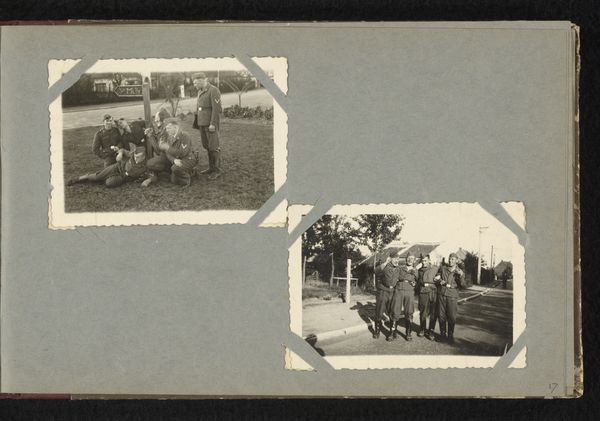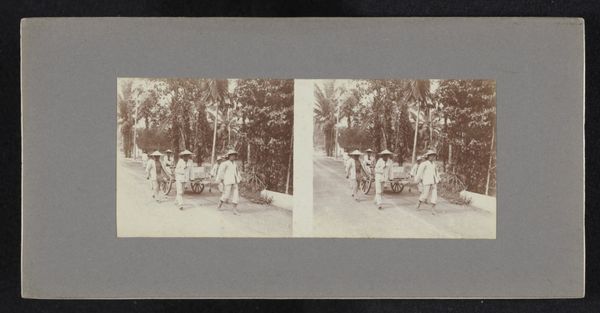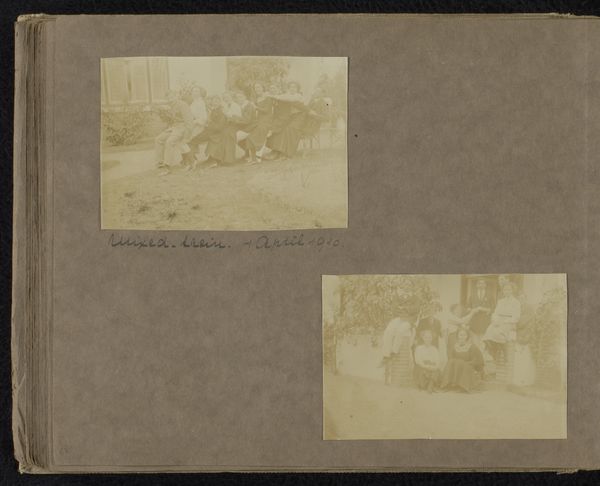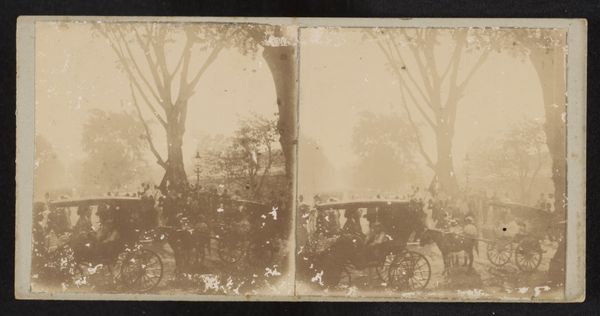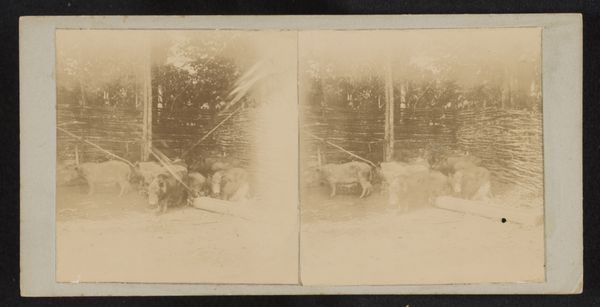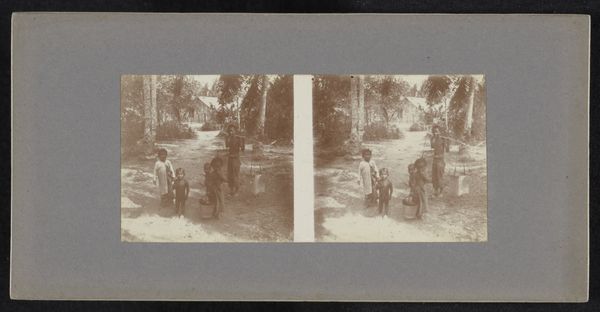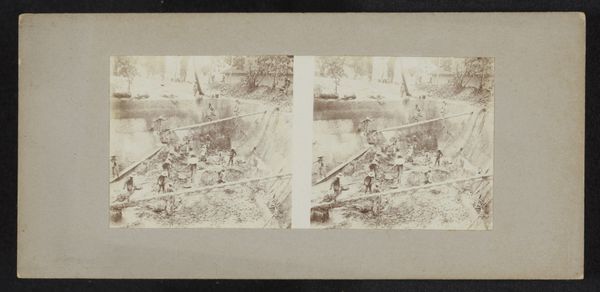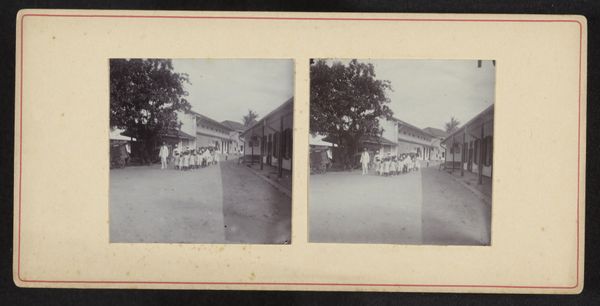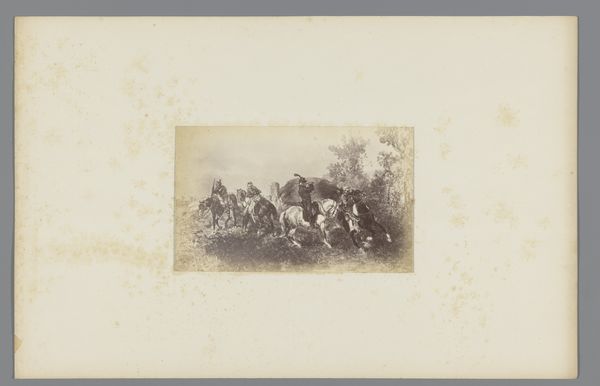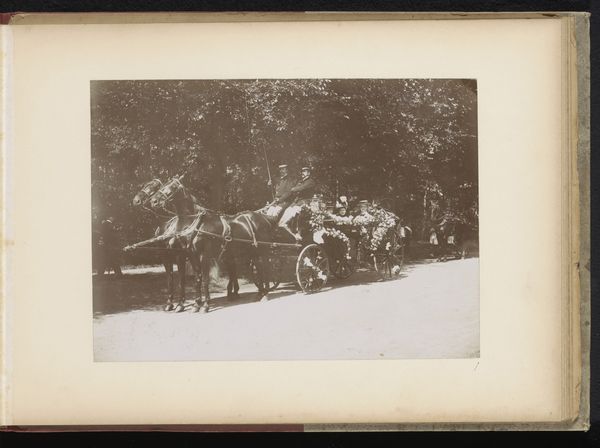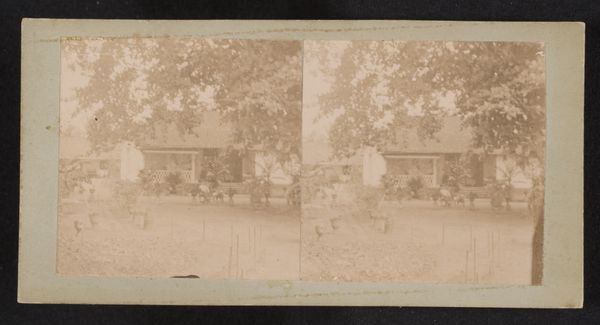
photography
#
landscape
#
street-photography
#
photography
#
orientalism
Dimensions: height 52 mm, width 55 mm, height 88 mm, width 178 mm
Copyright: Rijks Museum: Open Domain
Curator: This stereograph, "Straatgezicht Soengeiliat," created between 1900 and 1922 by Robert Julius Boers, offers us a glimpse into a street scene in, likely, Indonesia. Editor: My first impression is one of distance. It feels both intimate and remote, likely owing to the stereo format and subdued sepia tones—like a half-remembered dream. Curator: Indeed. The double image flattens depth, but what’s depicted signifies the hierarchies of its time, no? It's the orientalist gaze made tangible. We are given a safe vantage, perhaps, but at whose expense? This implicates us. How do we situate ourselves, aware of those past gazes shaping contemporary understanding? Editor: The materiality speaks volumes. It's a straightforward photograph, simple and seemingly unadorned. But consider the resources required to capture this scene at the turn of the century—the darkroom setup, transportation, the time itself. Photography, even then, was an exercise of power through technology. And look at the small details—the cart’s construction, the way the people are positioned—they reveal labour practices and class structures inherent in that society. Curator: Exactly. And those details also lead me to consider gender and power dynamics at play, since those sitting in the cart most likely benefit from a lower social stratum who work as caretakers. These structures existed at that historical intersection in order to perpetuate class. The way labor is divided within this street becomes central to the scene. Editor: I think zooming out is necessary; let’s not miss how it’s an object meant for mass consumption—intended to be viewed in parlors across Europe or perhaps even in the States. What desires and fantasies did it fulfill for those viewers regarding faraway lands? What roles were assigned to those being viewed? Curator: A photograph serving a very specific colonial narrative. We can interrogate it further; what might it mean for the contemporary viewer? How does this photograph resist easy classification and challenge assumptions we project onto its subjects? What would a decolonial gaze directed at such photographs entail? Editor: It requires constant unlearning, rethinking what this object means and who it was truly meant for, as we re-contextualize the social context of the photograph and reflect critically. We’ve hopefully cast a light on that for listeners. Curator: I concur. Understanding and constant critical reevaluation; it’s crucial, now more than ever.
Comments
No comments
Be the first to comment and join the conversation on the ultimate creative platform.
